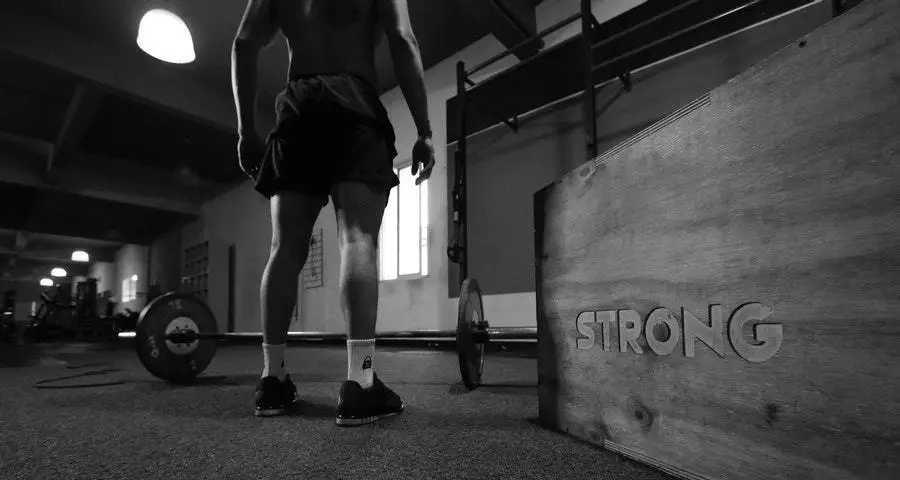To become a strong runner, you need strength, endurance, and speed, which will come not only by running or by cross-training, but also with strength training. Half marathon training with weight lifting has many benefits, so it is better to add this training to your exercise schedule.
Strength training is suitable for strengthening your legs, core, glutes, hips, and other muscles. To build up your strength, you need a variety of workouts. Proper weight training also helps you to prevent injuries. It prevents injuries such as low back pain, nagging hips, bone injuries, and connective tissue aches and strains.
Weight training improves your performance and helps you to run faster without getting exhausted. To get started you don’t have to do too much strength training. You can start with a less intense workout, and once you get used to the workout, begin increasing the intensity, weight, and/or volume of your strength training.
Benefits of Half Marathon Training with Weight Lifting
In order to increase speed, tempo running, hill running, sprint running, and interval training are essential, and for improving endurance, long runs are essential. But only by running, your muscles are not going to get stronger. A runner’s main target is to build up all the main muscles of the body. So it is important for you to prepare your muscles physically, to increase your running speed through some Weight lifting or weight training. Bone osteoblasts take place when you burden your joints and muscle tissues with heavyweights. This process strengthens your tendons, bones, collagen, and ligaments, making them stronger in such a way that it is beneficial for long-distance runners. Long-distance runners have common injuries, such as stress fractures and breaks. Weight lifting increases the density of bone, which helps shield runners against possible sustained injuries. This exercise makes the runners healthier, and more robust and helps them run faster during competition.
Weight lifting prevents injury
Building strength helps runners avoid hip pain, knee pain, and many other injuries associated with running. Stronger muscles and a more durable body can easily absorb the pressure on your joints and help prevent injuries. When you’re only running and don’t strength train extra pressure is placed on the hip flexors, which causes the larger glutes to reduce in size which otherwise helps them function correctly.
Exercises such as hip thrusts and Deadlifts target glutes and help you prevent nagging injuries. Sufficient muscle strength in your core is required to stabilize your joints properly, and it also naturally places you in a proper running form. Strong muscles even prevent pelvic drops. Runners are bound to develop asymmetries and weaknesses at specific points with a sustained hip injury. Hip dips (or drops) can lead to an overuse injury on one side and overcompensation on the other side, but well-designed weight training reduces these asymmetries and weak points and helps you to reduce the risk of injury.
Related: Should you do cardio before or after weight training?
Weight Training gives better running efficiency
Running economy formula i.e., VO2 (mL/kg/min) / [speed (km/h) / 60], shows the amount of oxygen that is used by a runner at a specific speed while running. The efficiency factor here is using less oxygen and energy at a particular speed. An efficient runner will use less oxygen and energy for a longer amount of time while running a certain distance while maintaining a higher speed. Strength training lowers the amount of energy needed to strike a particular distance and makes you run faster. Strength training can help improve your running economy by more than 6 percent, without losing your body weight, and muscle size. Overall helps you become a more efficient runner.
Strength Training increases your running speed
Weight lifting helps you build strength or improve your muscle strength, which helps you run faster. Your legs get more robust with these exercises. You can cover a longer distance with each stride if you have stronger legs. Sufficient muscle strength will act as a foundation for power training, which depends on this strength and converts it into speed. Specialized weight training improves your running performance.
Related: Should You Stretch Before Or After Weight Training?
Half Marathon Training with Weight Lifting
- You need at least two weight training sessions per week.
- Here is a list of great strength training exercises for runners. Compound workouts such as Trap Bar and Squats and single-leg workouts such as lunges are great ways to work out multiple muscle groups at the same time. The lunge matrix is a great strength training exercise that can be done with or without weights. To start, your body’s weight is sufficient enough as a great starting point for the lunge matrix.
- Take complete rest for at least 45 seconds up to 3 minutes between sets. Strength training needs a longer rest period because it is more exhausting and demanding on your overall body.
- You can combine your strength training and easy run or long run sessions on the same day. Give yourself a 6-hour break between the exercises if possible.
- Remember that running is a priority and when push comes to shove you need to select runner-specific training (i.e. running) over strength training and cross-training. However, I would make it mandatory that you strength train at least once per week.
- Here is a great resource with complete instructions for each strength training exercise:

You can easily add weights to this lunge matrix exercise:
Trap Bar and Squats are another great leg strengthing exercise if you have access to a trap bar:
Weekly workout schedule for Half Marathon Training with Weight Lifting:
- The first day: Full strength training body workout (above exercises).
- The second day: Run per training schedule
- The third day: Full strength training body workout (above exercises).
- The fourth day: Run per training schedule (or easy run)
- The fifth day: Rest day or active recovery day
- The sixth day: long-distance run
- The seventh day: Easy run or cross-train
The most important part of a training schedule (and what it doesn’t tell you) is that you have to listen to your body. If you need an extra rest day – take it! If you feel like running 1 extra mile that’s ok too. Allowing yourself some flexibility in your schedule will go a long way to make your training a tad bit more enjoyable.
Half Marathon Training Schedules:
12-week/15-week beginner half marathon training plan (free sign up required)
8-week beginner half marathon training plan
8-week intermediate half marathon training plan (easily run a 5K)
4-week advanced half marathon training plan (already run 6+ mile long runs)
Half marathon walking training plans complete with pacing charts
Don’t make these Half Marathon Training and Weight Lifting mistakes:
Please don’t depend on online classes, DVDs, and WODs:
It is essential to appoint a personal trainer for your workouts rather than depending on DVDs, online courses, etc. A personal trainer knows the ability or strength of your body precisely. He will schedule exercises for you according to your body type. Consider finding and you using a local or virtual Certified Personal Trainer with running strength training knowledge.
Lifting weights like a bodybuilder:
Remember that this exercise is to improve your running and not to build your muscles. You are not a bodybuilder. You are a runner. Though weight training is necessary for a runner, you do not have to put in long hours and workout for 4 to 6 days in the gym and do heavy weight training. Two weight training sessions a week should be enough to help improve performance and minimize running injuries.
Are you looking for answers to commonly asked weight lifting questions? Get your questions answered by a certified personal trainer – Weight Lifting 101 (certified personal trainer approved)!
Don’t depend on stability training:
You will miss out on your weight training for running if you do too much stability training. Weight training is more important as it enables you to produce force to help run faster.
Other workouts:
The 13.1-mile run or a Half Marathon Training Schedule should contain other workouts besides weightlifting. Following is the Schedule for the Half Marathon Runners.
Pace correctly:
The speed of your run should be conversational and comfortable. If you cannot speak in full sentences, that means you are running very fast.
Distance running:
Recovery/rest day:
Recovery is an essential part of your workout schedule. It helps your muscles recover after harder workouts, and it also prepares you for the next workout. Remember that you only build and repair muscles when you’re not running or lifting weights.
Long runs:
Distance running is also essential for runners. You should run at least 3 to 10 miles. Choose an excellent scenic place for your long-distance run. Many runners have a running buddy to share the long conversation-paced run with.
Long runs are an important key in any marathon, whether it is a full marathon or a half marathon. Every week you should increase your long run distance. You can start at 3 miles and gradually increase it to 10 miles by adding roughly 1 mile a week to your long run. After that, when your body has adjusted to the demands of the long run, you bump up your goal and aim for 13.1 miles, which is precisely the distance of a half marathon.
How to prepare for the long run?
Long Run Half Marathon Strategies.
Get more out of your long-distance runs
Cross-training:
At least once a week, you should do cross-training such as Cycling, walking, swimming, power yoga, pilates, spin cycling, aerobics, etc. As Cross training is an easy workout, it is observed by some as a recovery day as it allows you to recover from your running. Also, note that strength training and weight lifting are not considered cross-training activities. Some other sports allow strength and weight training to be classified as Cross-Training. Cross-training for runners should be considered as any activity that does not involve weight training or running.
Walking:
Walking is a superb exercise for runners. You can take walking breaks whenever you are tired while running. In fact, you can even walk the entire distance briskly. Walking helps use other muscles in your legs that are slightly different than when running. These additional leg muscles being worked out helps you overall further strengthen your muscles and bones. Also, if you ever aim your goals super high and want to run an ultra-marathon, you will most definitely be using walking in your training.
Can you walk a half marathon in 4 hours?
How long does it take to walk a marathon?
Weight lifting or strength training:
Some weight lifting or strength training is essential to runners. It strengthens your joints and muscles and also reduces the risk of injury. Twice a week of weight lifting or strength training is a must. This prepares your muscles for a high-intensity workout or activity, which prevents injury.
Are you looking for a great set of weights or recommended strength training gear? Head over to my strength training section on my recommended gear for runners page.
Racing:
Racing makes runners comfortable with the sport. This helps you to run for more than 60 minutes. You should always keep between 5 kilometers (5K = 3.1 miles) and 10 kilometers (10K=6.2 miles) of race in your training schedule.
Workout/time juggling:
Do not hesitate to shuffle around your workouts when necessary. You can change up your routines according to your schedule to make exercising more convenient. The one thing I recommend is that you don’t put hard workouts back to back. In other words, Don’t do a speed workout one day and turn around and run another speed workout the next day. Are you having trouble finding the time to train, if so check out this detailed post with ideas of finding the time in your schedule to train:
How to find the time to train for a half marathon?
Always remember hard work and the desire to attain your goal is the key to success.
Are You Considering A Full Marathon Race?
If you’ve recently completed your first half marathon and you’re considering a full marathon race, it’s going to take you roughly another 8 weeks to be able to run the full marathon, at a minimum. I ran my first half marathon race and then immediately started training for my first marathon race which was 12 weeks later.
One way to line up your first half marathon race while training for a marathon race is to treat your first half marathon race as simply one of your upper long runs of 13.1 miles. Run at an easy pace and simply complete the half marathon race. You will have completed two tasks with one run: 1) finished a half marathon race and 2) completed a long run in your marathon training schedule.
For a full post on transitioning from a half marathon to a marathon race check out: From Half To Full: 10 Ways To Transition To A Full Marathon.
| Help support me and subscribe to my YouTube channel. YouTube video - 30 ways to make your runs less painful! Coach Scott's Credentials:
|
To sign up for a FREE half marathon training schedule, log sheet, and pace predictor CLICK HERE.

Recommended gear for runners
Connect with me:
| facebook.com/BeginnerToFinisher/ |


